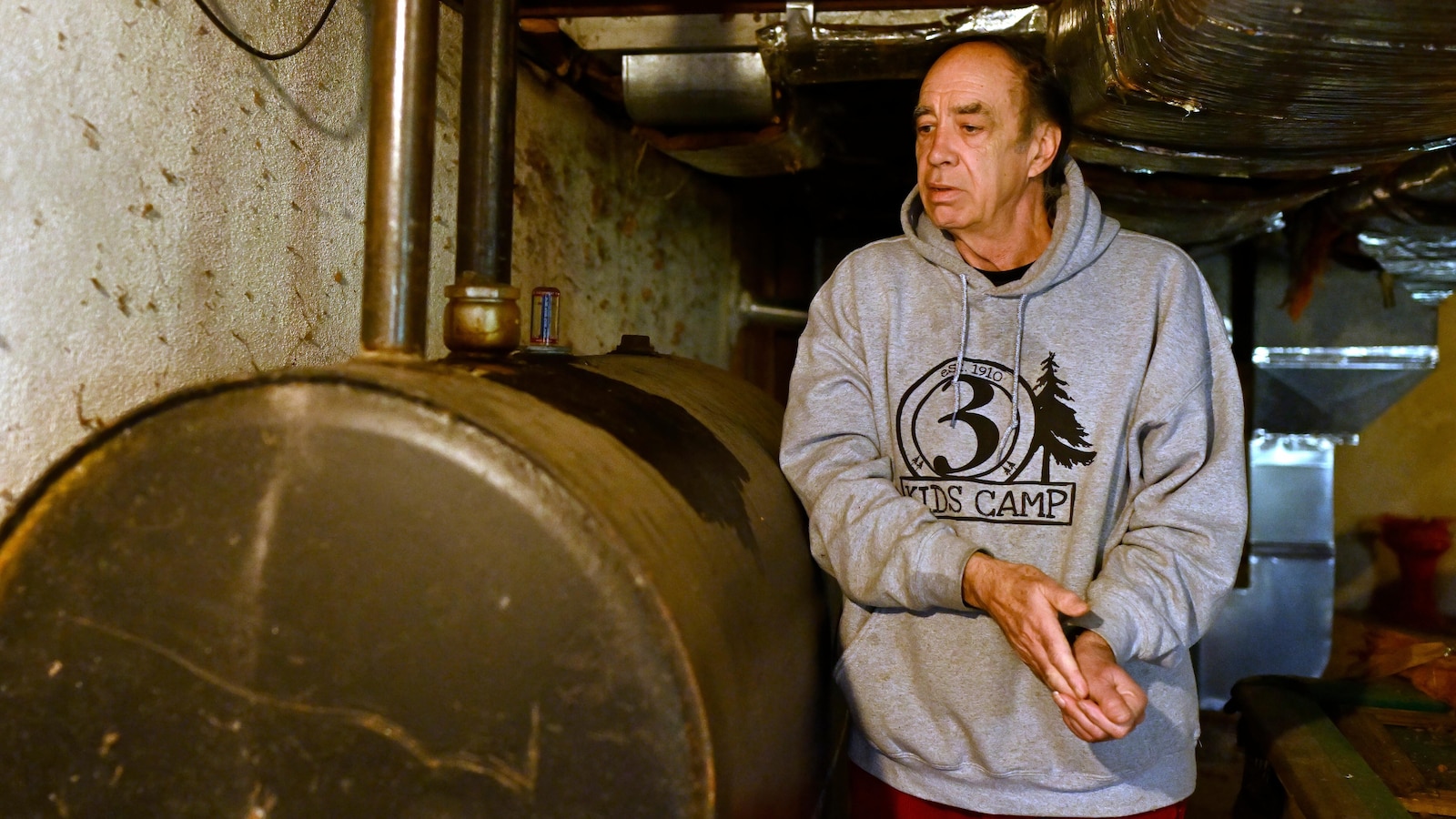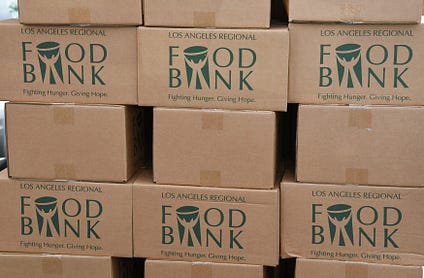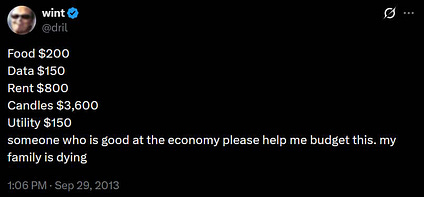Government shutdown threatens to delay home heating aid for millions of low-income families – ABC News

Report on the Suspension of LIHEAP Funding and its Impact on Sustainable Development Goals
Executive Summary
A federal government shutdown has resulted in a critical delay in the disbursement of the $4.1 billion Low-Income Home Energy Assistance Program (LIHEAP), a federally funded initiative that supports 5.9 million low-income households with heating and cooling costs. This suspension of a vital social safety net directly undermines progress on several key Sustainable Development Goals (SDGs), particularly SDG 1 (No Poverty), SDG 3 (Good Health and Well-being), SDG 7 (Affordable and Clean Energy), and SDG 10 (Reduced Inequalities). The delay places vulnerable populations at immediate risk as temperatures begin to drop, compounding the economic instability already experienced by many due to concurrent cuts in other federal aid programs.
Implications for Sustainable Development Goals (SDGs)
SDG 1: No Poverty & SDG 10: Reduced Inequalities
The interruption of LIHEAP funding represents a significant challenge to the achievement of SDG 1 (No Poverty) and SDG 10 (Reduced Inequalities). The program serves as a critical social protection system, preventing energy costs from pushing households into poverty. The current delay exacerbates economic hardship and inequality for the nation’s most vulnerable citizens.
- Targeted Vulnerable Groups: The program primarily serves households with elderly individuals, young children, and persons with disabilities, populations that are disproportionately affected by economic shocks.
- Compounded Financial Strain: A majority of the 5.9 million households served by LIHEAP are also grappling with the simultaneous postponement of benefits from the Supplemental Nutrition Assistance Program (SNAP), creating a convergence of crises that threatens basic needs.
- Erosion of Economic Security: For individuals like Jacqueline Chapman, a 74-year-old retiree relying on a $630 monthly Social Security check, the loss of energy assistance alongside food aid creates profound financial instability and anxiety.
SDG 3: Good Health and Well-being
The inability to afford adequate home heating poses a direct threat to SDG 3 (Good Health and Well-being). Access to a warm and safe living environment is a fundamental determinant of health, especially during winter months.
- Physical Health Risks: Lack of heating can lead to severe health conditions such as hypothermia and exacerbated respiratory illnesses, particularly among the elderly and young children.
- Mental Health Impacts: The uncertainty and stress associated with securing basic necessities contribute to significant mental anguish. One recipient described the situation as “living in scary times,” highlighting the psychological toll of the funding crisis.
SDG 7: Affordable and Clean Energy
LIHEAP is a primary instrument for advancing SDG 7, which calls for ensuring access to affordable, reliable, and modern energy for all. The funding delay directly obstructs this goal for millions of Americans.
- Barrier to Energy Access: The program’s suspension creates an immediate energy access crisis, forcing households to choose between heating their homes and other essential expenses like food or medicine.
- Disproportionate Impact on Fuel Types: Approximately 9% of LIHEAP recipients rely on deliverable fuels such as heating oil, propane, and kerosene. Unlike customers of state-regulated electric and gas utilities, these households often lack protection from service shut-offs, leaving them with no recourse when they cannot afford a delivery.
Analysis of Institutional Failures and State-Level Impacts
SDG 16: Peace, Justice and Strong Institutions
The crisis originates from a failure of effective and accountable governance at the national level, a core principle of SDG 16. The federal government shutdown has paralyzed the delivery of essential public services, demonstrating how institutional weakness can have severe and direct consequences on citizens’ welfare. The situation is further complicated by administrative challenges within the U.S. Department of Health and Human Services, including the dismissal of staff responsible for administering the LIHEAP program, which is expected to cause further delays even after the government reopens.
State-Level Consequences
The federal impasse has shifted an unmanageable burden onto state governments, which administer LIHEAP but lack the resources to cover the funding gap. Several states have announced significant delays in their energy assistance programs.
- Pennsylvania: The state cannot front the expected $200 million in federal aid, affecting approximately 300,000 low-income households. Payments are now predicted to be delayed until at least December, rather than the customary start in November.
- Minnesota: The state’s energy assistance program, which serves 120,000 households, is processing applications but will not pay recipients’ heating bills until the federal shutdown ends, creating a delay of at least one month.
- Connecticut: While the state may have sufficient funds to cover costs through November or December, the program faces significant uncertainty if the shutdown persists. The program served over 100,000 households last year.
SDGs, Targets, and Indicators Analysis
1. Which SDGs are addressed or connected to the issues highlighted in the article?
SDG 1: No Poverty
The article directly addresses SDG 1 by focusing on the financial struggles of low-income individuals and households. It highlights how the delay in social assistance programs, such as the Low-Income Home Energy Assistance Program (LIHEAP) and the Supplemental Nutrition Assistance Program (SNAP), pushes vulnerable people further into poverty and economic insecurity. The story of Jacqueline Chapman, a retiree living on a $630 monthly Social Security check, exemplifies the precarious situation of those living in or near poverty who depend on these safety nets.
SDG 2: Zero Hunger
This goal is connected through the mention of the Supplemental Nutrition Assistance Program (SNAP). The article states that households served by LIHEAP are also “grappling with the sudden postponement of benefits through the Supplemental Nutrition Assistance Program, or SNAP, which helps about 1 in 8 Americans buy groceries.” This directly relates to food security and ensuring access to sufficient food for the poor and vulnerable.
SDG 7: Affordable and Clean Energy
The central theme of the article is the LIHEAP program, which is designed to help low-income households afford to heat and cool their homes. The delay in funding for this program directly threatens access to affordable energy for millions. The experiences of Jacqueline Chapman and Mark Bain, who worry about paying for heating oil, underscore the importance of affordable energy for maintaining a basic standard of living, which is the core of SDG 7.
SDG 10: Reduced Inequalities
The article highlights how the government shutdown disproportionately affects the most vulnerable segments of the population, thereby exacerbating inequalities. It explicitly mentions that the LIHEAP program serves households that “include many older adults, young children and people with disabilities.” The failure of these social protection systems impacts these specific groups more severely than the general population, which is a key concern of SDG 10.
2. What specific targets under those SDGs can be identified based on the article’s content?
Under SDG 1: No Poverty
- Target 1.3: Implement nationally appropriate social protection systems and measures for all, including floors, and by 2030 achieve substantial coverage of the poor and the vulnerable. The article’s entire focus is on the disruption of social protection systems like LIHEAP and SNAP, which are designed to provide a safety net for low-income and vulnerable populations. The delay in funding represents a failure to effectively implement these systems.
Under SDG 2: Zero Hunger
- Target 2.1: By 2030, end hunger and ensure access by all people, in particular the poor and people in vulnerable situations… to safe, nutritious and sufficient food all year round. The postponement of SNAP benefits, which helps “1 in 8 Americans buy groceries,” directly jeopardizes the ability of vulnerable people to access sufficient food.
Under SDG 7: Affordable and Clean Energy
- Target 7.1: By 2030, ensure universal access to affordable, reliable and modern energy services. The LIHEAP program is a direct mechanism for achieving this target for low-income households. The article details how the funding delay threatens access to affordable heating, forcing individuals like Mark Bain to consider turning down their heat to unsafe levels (“62 (degrees) and throw on another blanket”).
Under SDG 10: Reduced Inequalities
- Target 10.2: By 2030, empower and promote the social, economic and political inclusion of all, irrespective of age, sex, disability… or economic or other status. The article points out that the program’s beneficiaries include vulnerable groups such as “older adults, young children and people with disabilities,” whose well-being is at risk due to the funding delay, highlighting their social and economic vulnerability.
- Target 10.4: Adopt policies, especially fiscal, wage and social protection policies, and progressively achieve greater equality. The article discusses the failure of a key social protection policy (LIHEAP) due to a fiscal issue (the government shutdown), demonstrating a setback in achieving greater equality through such policies.
3. Are there any indicators mentioned or implied in the article that can be used to measure progress towards the identified targets?
For Target 1.3 & 10.4 (Social Protection)
- Number of households/individuals covered by social protection programs: The article provides specific numbers that serve as indicators of the scale of these programs.
- “5.9 million households served by the federally funded heating and cooling assistance program.”
- “300,000 low-income households” in Pennsylvania expecting LIHEAP aid.
- “120,000 households” served by the program in Minnesota.
- “More than 100,000 households were served last year” in Connecticut.
- SNAP helps “about 1 in 8 Americans.”
- Funding allocated to social protection programs: The article mentions the “$4.1 billion Low-Income Home Energy Assistance Program,” indicating the financial commitment to this social safety net.
For Target 2.1 (Access to Food)
- Proportion of the population relying on food assistance: The statement that SNAP “helps about 1 in 8 Americans buy groceries” is a direct indicator of the prevalence of food insecurity and reliance on government aid for nutrition.
For Target 7.1 (Access to Affordable Energy)
- Number of households receiving energy assistance: The state-specific and national figures for households served by LIHEAP (e.g., 5.9 million nationally) directly measure the reach of programs aimed at ensuring affordable energy.
- Proportion of energy types used by recipients: The article implies an indicator by stating “roughly 9% of LIHEAP recipients who rely on deliverable fuels such as heating oil, kerosene, propane and wood pellets,” which helps in understanding the specific energy needs of the vulnerable population.
For Target 10.2 (Inclusion of Vulnerable Groups)
- Demographic breakdown of assistance recipients: While not providing hard numbers, the article implies the need for this indicator by stating the program serves “many older adults, young children and people with disabilities.” Tracking the number of people from these specific groups who receive benefits would measure progress toward including the most vulnerable.
4. Create a table with three columns titled ‘SDGs, Targets and Indicators” to present the findings from analyzing the article.
| SDGs | Targets | Indicators |
|---|---|---|
| SDG 1: No Poverty | 1.3: Implement nationally appropriate social protection systems and measures for all… and achieve substantial coverage of the poor and the vulnerable. |
|
| SDG 2: Zero Hunger | 2.1: End hunger and ensure access by all people, in particular the poor and people in vulnerable situations… to sufficient food all year round. |
|
| SDG 7: Affordable and Clean Energy | 7.1: Ensure universal access to affordable, reliable and modern energy services. |
|
| SDG 10: Reduced Inequalities | 10.2: Empower and promote the social, economic and political inclusion of all, irrespective of age, disability, or economic status.
10.4: Adopt policies, especially… social protection policies, and progressively achieve greater equality. |
|
Source: abcnews.go.com
What is Your Reaction?
 Like
0
Like
0
 Dislike
0
Dislike
0
 Love
0
Love
0
 Funny
0
Funny
0
 Angry
0
Angry
0
 Sad
0
Sad
0
 Wow
0
Wow
0




















































.jpg.webp?itok=0ZsAnae9#)


























